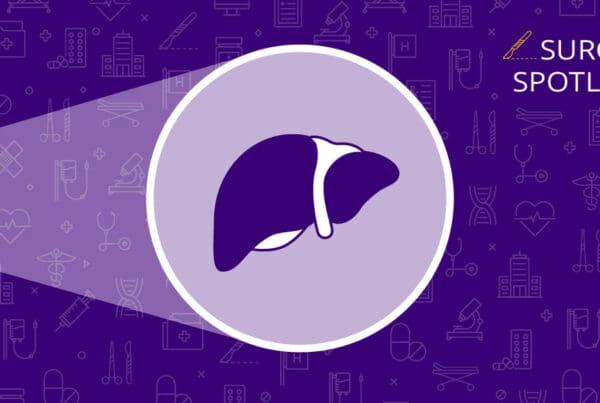Highlights | Telemedicine here to stay
- The Telehealth Services team expedited a comprehensive telemedicine program to meet patient needs during COVID-19.
- Over 3,000 primary care physicians and specialists now have telemedicine privileges.
- Telemedicine is here to stay, and the Telehealth Services team is committed to making access more equitable.
Before COVID-19, UW Medicine had a three-to-five-year plan to roll out a comprehensive telemedicine program. In February, when we recognized that COVID-19 was going to make a much bigger impact on our community and healthcare system, Telehealth Services rolled out that plan in just three months.
“When COVID-19 hit locally, we realized telehealth needed to be an integral part of our strategy in combatting this pandemic,” says Crystal Wong, MD, associate medical director of Digital Health. “We were not going to abandon our patients just because we couldn’t see them face to face.”
Telehealth Services, a team of just nine people, stepped up to the plate.
An expedited rollout
Accelerating a multiyear, phased plan to a three-month rollout is no small feat. The team knew they couldn’t do this alone, so they borrowed staffing from various departments and set up daily virtual huddles to create their plan.
Teams that came to the rescue
The intradepartmental collaboration and teamwork demonstrated across the healthcare system was integral to the success of the rollout. Compliance, Information Technology (IT), Clinical Operations, UW Physicians, UW Medicine Learning Hub, the Contact Center and many more departments came together (virtually) to make this happen.
The involvement of the IT team was essential to troubleshooting user access and the integration of systems like Epic and Zoom.
“The UW Information Technology (IT) team has been fantastic, quick and nimble through this,” says Molly Shumway, director of Telehealth Services. “I have not seen anything move this quickly in my time at UW Medicine.”
There was also a significant amount of back-end work with billing and coding, and the guidelines for telemedicine during COVID-19 were changing almost daily. Shumway says that the compliance team did an amazing job of keeping up with the changes and helping communicate that information to providers.
Not to mention the ever-increasing call volumes that the Access team at the Contact Center managed.
“We put together infrastructure on how to support any clinic in UW Medicine,” says Wong. “But we still needed to get the word out to providers, and they needed to get telehealth training and privileges.”
The rush for privileges
Despite the team’s ability to get scheduling and IT systems going, until more providers were credentialed, they couldn’t run this program to the extent that was needed for system-wide patient care.
At the time, telehealth was considered a special privilege that was not automatically granted upon being a provider for UW Medicine, and it required completing a training and the approval of a special privilege form. In February, approximately 160 providers had telehealth privileges.
To get privileges, the Telehealth Services team needed to manually assign a training module to a provider, who would then need to complete the training, print out a form to sign and send it to their department, Telehealth Services and the Office of Medical Staff Appointments (OMSA) for approval.
“UW Medicine is a complex medical system,” says Wong. “With specialists working out of many clinics, it’s not so cut and dry.”
Sending a document back and forth and confirming it was sent to the correct place was not feasible for how fast our providers needed these privileges.
So, they automatically assigned the training to all providers in the system. Any provider who wanted privileges could quickly complete the training modules without jumping through hoops and paperwork.
Just four months after the training was sent to all providers, over 3,000 UW Medicine providers were granted telehealth privileges.
Now, telehealth is considered part of core medical staff privileges and training is required of all new providers as part of their onboarding.
Transitioning to telemedicine
Wong says that there is still a lot of work to do to make a virtual visit feel as easy as seeing someone face to face. She points to the support staff that create the patient experience: the appointment is booked by support staff, patients are greeted and directed by the front desk, and nurses help set up the patient for a visit with their provider.
“When you roll out telehealth rapidly, the focus is on the provider part,” says Wong. “You get an incomplete experience without the rest of the team.”
And the team is working on shifting this quick rollout to align with their longstanding goals.
“Long term, we will be moving from a ‘nice to have’ feature to more of an essential service,” says John Scott, MD, medical director of Digital Health. “We want to improve access and convenience for patients and improve the patient experience.”
Making telemedicine equitable
The push to roll out the telehealth program during COVID-19 was to provide more access to care for patients; and as helpful as it is for many patients, there are still people that are not being reached.
“This is where inequity hits you right in the face,” says Wong. “We have struggled with being able to roll this out quickly and in a manner that reaches the most patients.”
The Centers for Medicare and Medicaid Services (CMS) issued temporary waivers to cover telehealth services and phone visits, which helped alleviate the financial burden on patients.
But Scott wants to better understand the barriers that patients and clinics are facing when it comes to using telehealth.
“There is a digital divide: unequal access to internet and unequal access to devices with video,” says Scott. “Or maybe you have access to both but are unable to work the technology.”
Some UW School of Medicine students are working as technology concierges. They help guide patients through the setup process and record the challenges so that Telehealth Services can learn from them.
“This is a golden opportunity to change a broken healthcare system, to make it easier and more equitable to access,” says Wong. “I am excited to see where we take this program and how we grow digital health at UW Medicine.”
The future of telemedicine
“We can now reflect a little bit on the amazing amount of work we did and what we accomplished,” says Wong. “100% of the primary care team can now do telehealth.”
Shumway estimates that in February there were approximately 40 clinics offering telemedicine visits. This is now available in almost all UW Medicine ambulatory sites.
On June 30, UW Medicine hit a major milestone for its telemedicine program: 100,000 telemedicine visits.
Telemedicine visit volumes increased from roughly160 in February to over 33,000 in May. As clinics have started resuming in-person visits, telemedicine visit volumes have held a steady average of 4,800 visits per week for the months of July and August.
And the team is excited to be able to maintain these services for the long haul, not just as a COVID-19 backup.
“It’s changing our perceptions of where and how care can be delivered,” says Scott. “Telehealth is here to stay, and we are continually working to improve the experience for our patients and providers.”



